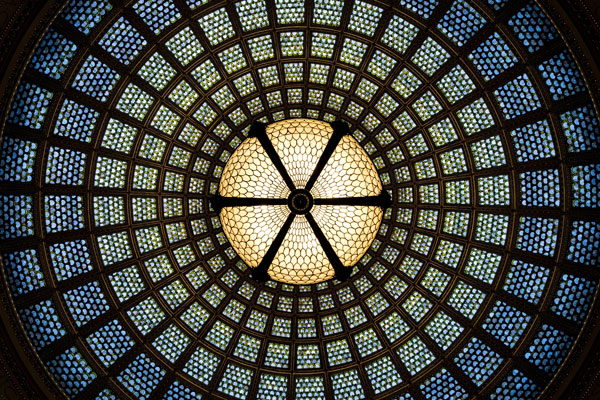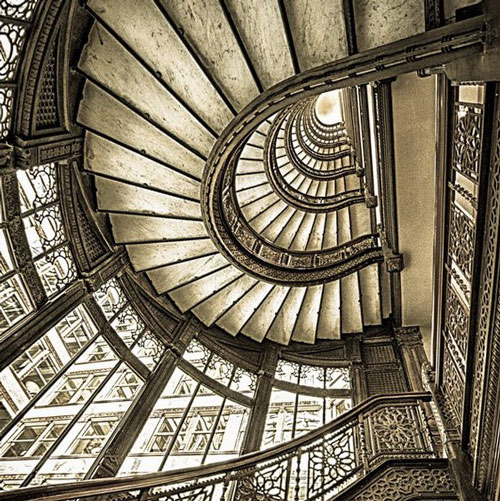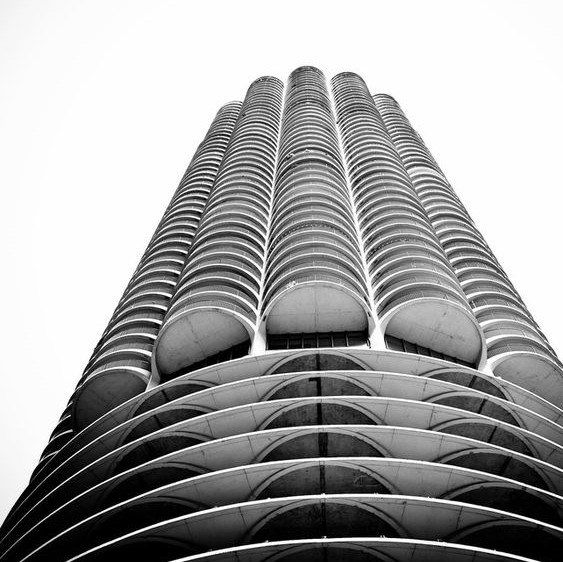I love walking around Chicago and taking in all of its amazing architecture. One of the coolest things about its residential neighborhoods in particular is that the houses aren’t all new construction with vinyl siding and pitched roofs. Instead, you’ll see a variety of old brick homes, some over a hundred years old. These houses were built between the aftermath of the Great Chicago Fire of 1871 and the turn of the century, when Chicago was rebuilding and industry was booming. The captivating ornamentation and detail of these houses and buildings inspired me to incorporate some of their elegant simplicity into a new fine jewelry collection.
The Great Chicago Fire
 The Chicago we know and love today might not have existed without the Great Chicago Fire. The fire began almost exactly 150 years ago, on October 8, 1871. Though it is established that the fire began at a barn located at 558 W. DeKoven Street, its actual cause remains unknown. This mystery has spawned a number of urban legends: a cow kicked over a lantern in the barn, according to one, while another claims the lantern was kicked over during the breakup of an illegal craps game taking place behind the barn.
The Chicago we know and love today might not have existed without the Great Chicago Fire. The fire began almost exactly 150 years ago, on October 8, 1871. Though it is established that the fire began at a barn located at 558 W. DeKoven Street, its actual cause remains unknown. This mystery has spawned a number of urban legends: a cow kicked over a lantern in the barn, according to one, while another claims the lantern was kicked over during the breakup of an illegal craps game taking place behind the barn.
The fire spread swiftly thanks to a summer-long drought, strong winds, and a densely packed urban center that consisted of wooden buildings and wooden sidewalks. By the time it was extinguished by rain three days later, 300 people were dead, 100,000 were homeless, and a four-mile stretch of the city was reduced to ash.
In the aftermath, donations and aid poured in from all over the world, with many American cities donating both money and provisions. One donation from the UK helped to establish the Chicago Public Library. Eventually, the city rewrote its building codes and fire standards, improved its firefighting forces, and rebuilt with brick, stone, and heat-resistant terracotta. The revival of Chicago was a decades-long project that began as soon as the fires went out and lasted until the turn of the century.
Finding Inspiration in Revival
 Reflecting on the fire on its 150th anniversary, the theme of revival resonated with me. When the pandemic began, I was pivoting from a brand that did a mix of silver and gold jewelry to a full-on fine jewelry line. I took the opportunity to overhaul my brand and website into something new and more focused. Luckily for me, I was able to use this time to think about my brand and business and put a lot of time into sketching and designing. The tragedy of 150 years ago inspired Chicago to rebuild a city that was both stronger and more beautiful. I was determined to do the same.
Reflecting on the fire on its 150th anniversary, the theme of revival resonated with me. When the pandemic began, I was pivoting from a brand that did a mix of silver and gold jewelry to a full-on fine jewelry line. I took the opportunity to overhaul my brand and website into something new and more focused. Luckily for me, I was able to use this time to think about my brand and business and put a lot of time into sketching and designing. The tragedy of 150 years ago inspired Chicago to rebuild a city that was both stronger and more beautiful. I was determined to do the same.
The work of creating fine jewelry requires the input of designers, metalworkers, and lapidarists. Likewise, the new houses of Chicago were the products of architects, carpenters, and masons all bringing their individual talents and crafts together. One of my favorite examples of their ingenuity is the Lucius Mantonya Flat, built in 1887 (pictured right). The Moorish influence in the brickwork of the keyhole windows is something we just don’t see in houses anymore. This motif provided the initial inspiration for the Revival Collection necklace.
 For the Revival Collection, I took inspiration not only from Chicago’s many unique residential buildings but from other famous examples of Chicago’s beautiful architecture, as well. The interior of the Rookery Building (pictured left), for example, features the interplay of elegant curving staircases and industrial geometry, balancing strength and a delicate grace. Another inspirational interior is that of the Cultural Building (pictured top right), with its magnificent Tiffany glass dome, the largest of its kind in the world. Completed in 1897, the building was the original home of the Chicago Public Library, a symbol of the city’s rejuvenation after the fire.
For the Revival Collection, I took inspiration not only from Chicago’s many unique residential buildings but from other famous examples of Chicago’s beautiful architecture, as well. The interior of the Rookery Building (pictured left), for example, features the interplay of elegant curving staircases and industrial geometry, balancing strength and a delicate grace. Another inspirational interior is that of the Cultural Building (pictured top right), with its magnificent Tiffany glass dome, the largest of its kind in the world. Completed in 1897, the building was the original home of the Chicago Public Library, a symbol of the city’s rejuvenation after the fire.

I’m also drawn to the design of buildings like Marina City (pictured right), known as the “corn cob” buildings, whose repeating curving patterns and cylindrical design afford a naturalistic sensibility to the concrete towers, a juxtaposition as artful as that of the Rookery Building.
The architecture that inspires me showcases a wide range of 19th and 20th century styles as diverse as Queen Anne, Art Nouveau, Art Deco, and Modernism. Out of this stylistic diversity, what really speaks to me are the geometric lines and the repeating patterns that, while simple on their own, create interesting juxtapositions and a sense of balance when taken as a whole. The Revival Collection is all about bringing these vintage motifs into a modern look: classic designs seen from a modern perspective.











